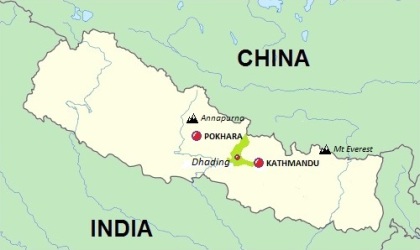Help us to continue with the work we are doing. As a small charity, please be assured that 100% of the donations received are used to fund our projects. So we are always very grateful for all of your continued support.
Children's Trust Nepal
Building a better future for Nepal's children
More about Nepal
 For many people, mention of Nepal brings to mind stories of adventure, success and tragedy on Mount Everest, or perhaps the legendary reputation of the Gurkhas. Yet there is far more to the country – from its amazing, unspoilt scenery and wonderfully friendly people, to the immense problems associated with being one of the poorest, least-developed and most mountainous countries on Earth.
For many people, mention of Nepal brings to mind stories of adventure, success and tragedy on Mount Everest, or perhaps the legendary reputation of the Gurkhas. Yet there is far more to the country – from its amazing, unspoilt scenery and wonderfully friendly people, to the immense problems associated with being one of the poorest, least-developed and most mountainous countries on Earth.
Why is Nepal so poor?
Nepal is sandwiched between the two competing giants of India and China, and being land-locked it has to rely on its goods and fuel being transported via India. Though it has some natural resources and water resources, it lacks the funds to utilise them effectively to export to other countries. Ten years of civil war ending in 2006 decimated the economy, with many people displaced, and the economy has struggled to recover in the years since.
Mountain roads are essential for communication, but with floods and landslides an everyday occurrence that can leave roads blocked for days, it places a significant strain on the limited finances that can be raised. Most of the population are too poor to pay tax, and in rural areas there is a great reliance on subsistence farming to survive. In recent years tens of thousands of Nepali have migrated to the oil-rich Gulf countries and Malaysia in search of work to earn money to send home. Consequently the country remains dependant on the foreign aid grants and other support it receives from the international community.
Why are there so many orphans in Nepal?
As is typical of such a poor country there is only a limited health care system, and with poverty comes a constant battle against malnutrition and disease. In addition to the economic effects, the civil war also decimated a generation (particularly young men), and the earthquakes and flooding the country has experienced in recent years have also resulted in families torn apart.
Progress in Nepal
Nepal has been working towards improving its exports – particularly textiles, carpets, jute, sugar and grain – and has also been encouraging more foreign investment. Given the natural topography, there is obviously great potential for schemes such as hydro-electricity if only the willing investment and partners can be found (and providing the local economy gets a fair share of the benefits).
The wonderful scenery and friendly people also make the country a great tourism destination, and efforts are now underway to encourage more visitors to explore this wonderful country. Going to Everest base camp may be a serious endeavour beyond the skills (and means) of many, but there are plenty of walking tours that are less challenging, and even a relaxed traveller can simply enjoy the sheer beauty of Nepal!


